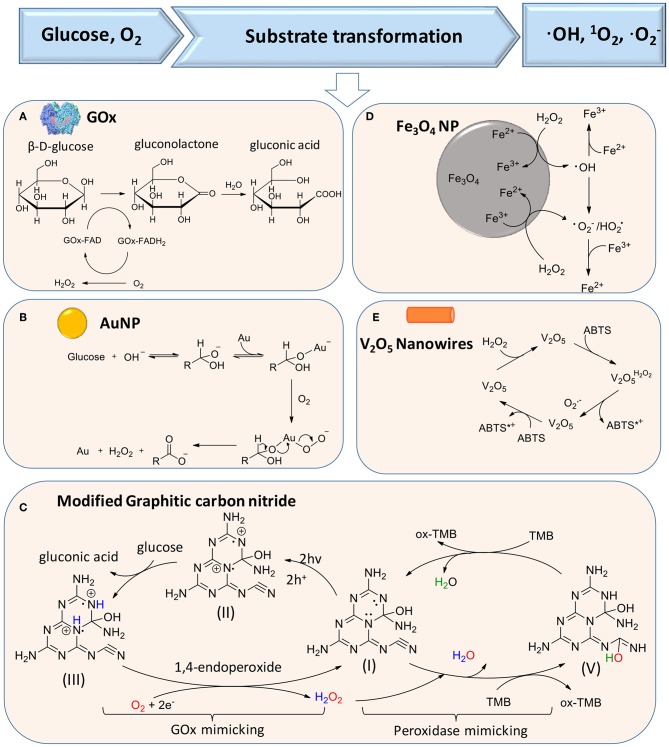Figure 2.
Substrate transformations in cascade reactions generating ROS, based on glucose and oxygen as substrates. (A) Generation of H2O2 from glucose using GOx (Witt et al., 2000) (with permission of Portland Press). (B) Catalysis of glucose transformation to H2O2 using catalytic, gold nanoparticles (Comotti et al., 2006) (with permission of John Wiley and Sons). (C) Modified carbon nitride as a bifunctional glucose-peroxidase enzyme-mimic (Zhang et al., 2019) (with permission of Nature Publishing Group). (D) Activation of H2O2 on Fe3O4 nanoparticles to achieve transformation of H2O2 to ROS (Wang et al., 2010) (with permission of Elsevier). (E) V2O5 nanowires catalyze transformation of H2O2 to in the presence of ABTS [2,2′-azinobis(3-ethylbenzthiazoline-6-sulfonate)] (André et al., 2011) (with permission of John Wiley and Sons).

